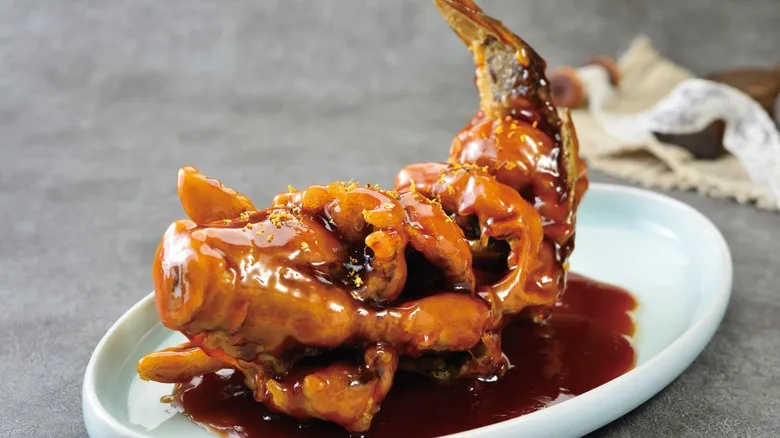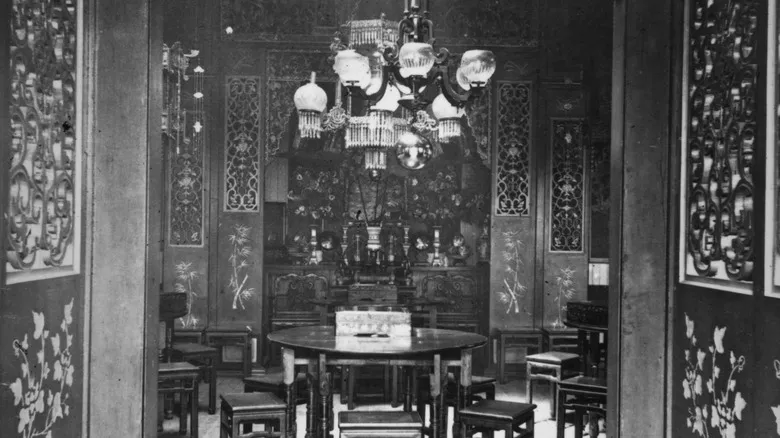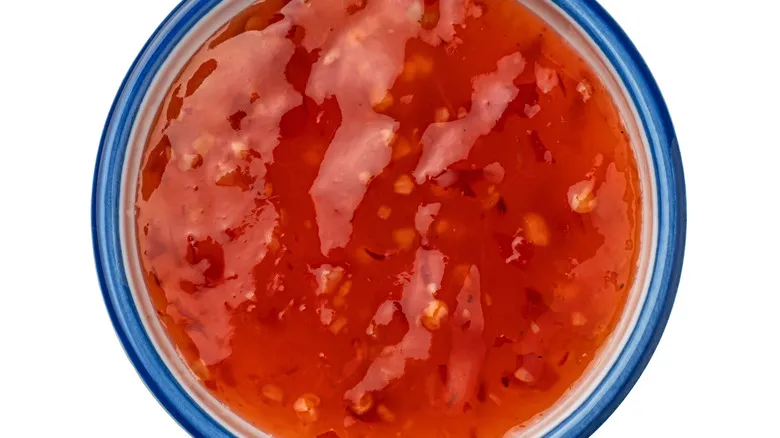What is sweet and sour sauce, and what does it taste like?

To grasp what makes sweet and sour sauce so irresistibly enjoyable, one must recognize its fundamental elements: the blend of vinegar and sugar. Although various Chinese dishes incorporate these two ingredients in their meat and seafood preparations, the sweet and sour sauce found in American restaurants typically consists of sugar, vinegar, ketchup, and soy sauce.
Sweet and sour sauce wasn't first concocted in China

In China, sweet and sour sauce is a common element in various regional dishes, ranging from sweet and sour spare ribs in Shanghai to sweet and sour Yellow River carp in Jinan. While these dishes and similar ones are thought to have been around for centuries, they were not widely prevalent, and this flavor pairing cannot be considered a defining feature of Chinese cuisine.
Sweet and sour sauce's story begins in the U.S.

The origin of sweet and sour can be traced back to the United States. In her book "Chow Chop Suey," Anne Mendelson explores the history of Chinese-American restaurant cuisine, highlighting its roots in the late 1880s, a time marked by the Chinese Exclusion Act. During this period, Chinese laborers established self-sustaining communities to support one another, and food became a symbol of the familial comfort they had left behind.
Chinese-American restaurants steadily rose in popularity

Over time, additional workers were attracted to the rich and flavorful dishes of Chinese cuisine. Restaurants in Chinatown started to see a more racially diverse group of working-class patrons. Before long, affluent white Americans also took notice, "discovering" Chinatowns as hubs of unique and delectable food.
Chefs added tomato-based sauces

By the early 1900s, Chinese restaurant owners were catering to large crowds. They had to give up some of their labor-intensive cooking methods and costly, hard-to-source spices. Instead, they sought ways to infuse flavor into their dishes quickly and effectively. Recognizing that Americans favored the sweet and tangy taste of tomato-based sauces like ketchup, the chefs began to glaze their meats with a more intense version of the sweet and sour sauces traditionally served in China. The initial recipes found in the Chinatowns of San Francisco and New York often incorporated ketchup, which contributed to the sauce's reddish hue, along with canned pineapple. They substituted the traditional, subtly-flavored rice vinegar with more robust, readily available white vinegar. These chefs discovered a shortcut to achieving the intricate flavor balance characteristic of Chinese cuisine, allowing them to quickly enjoy significant profits.
McDonald's added the sauce to its menu

Fifty years later, sweet and sour sauce was adopted by the quintessential American restaurant. In 1983, McDonald's launched the McNugget, accompanied by four signature sauces: honey, hot mustard, BBQ, and sweet and sour. Since then, the Americanized version of sweet and sour has made its way back to Asia, leading to even more regional variations. One recipe for sweet and sour pork, created by Cantonese-Singaporean chef Sin Leong, features a sauce made with white vinegar, tomato sauce, and Maggi seasoning, a flavor enhancer developed in Switzerland in 1886.
Sweet and sour sauce is internationally available today

Today, whether positively or negatively, the zesty, syrupy sauce has come to symbolize Chinese cuisine globally. As Michelin-starred chef Anita Lo remarked about the lasting appeal of General Tso's chicken, "Americans are drawn to it because it's a bit sweet, crispy, and has a hint of saltiness."
Recommended

Ina Garten's Valuable Tip On Bringing Host Gifts

The One Item You Should Avoid Buying In Bulk At Whole Foods

Why You Should Always Ask Your Grocery Store For Custom Cuts

How Old Are Eggs At The Grocery Store?
Next up

